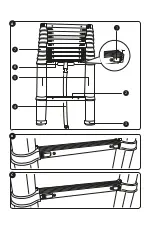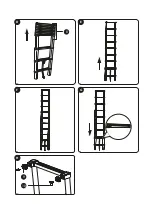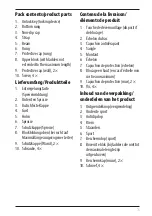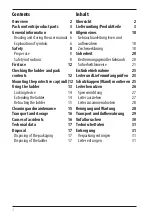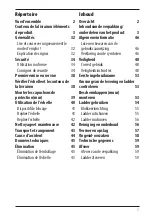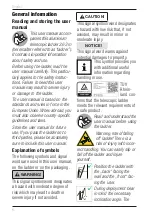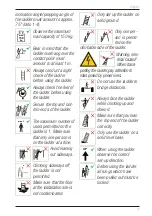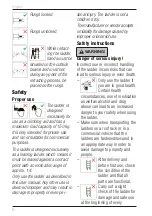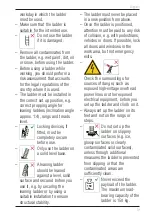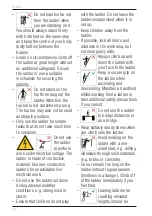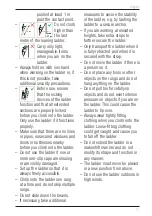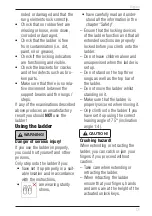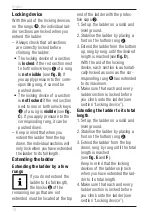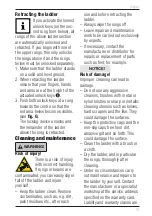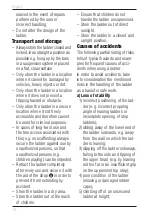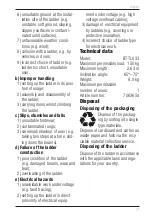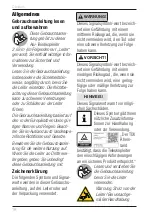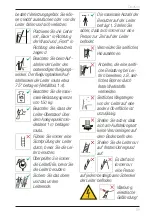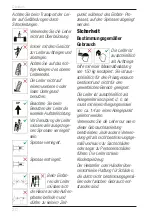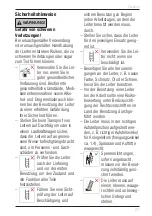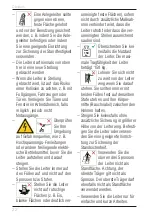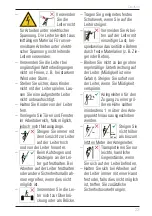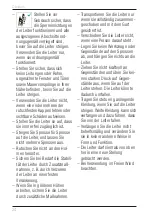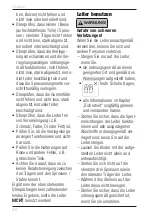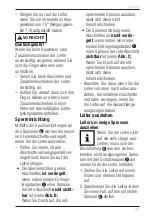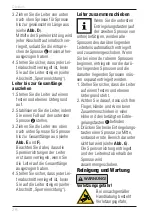
13
English
roded or damaged and that the
rung elements lock correctly.
• Check that no rubber feet are
missing or loose, worn down,
corroded or damaged.
• Check that the ladder is free
from contamination (i.e. dirt,
paint, oil or grease).
• Check if the locking indicators
are functioning and visible.
• Check the brackets for cracks
and other defects such as bro-
ken parts.
• Make sure that there is no rela-
tive movement between the
support beams and the rungs /
steps.
If any of the examinations described
above produces an unsatisfactory
result you should
NOT
use the
ladder!
Using the ladder
WARNING!
Danger of serious injury!
If you use the ladder improperly,
you could hurt yourself and other
persons.
Only step onto the ladder if you:
• have set it up properly, in a suit-
able location and in accordance
with the instructions,
•
are wearing sturdy
shoes,
• have carefully read and under-
stood all the information in the
chapter “Safety”.
–
Ensure that the locking devices
of the ladder function and that all
extended sections are properly
locked before you climb onto the
ladder.
–
Do not leave children alone and
unsupervised when the ladder is
set up.
–
Do not stand on the top three
rungs as well as the top bar of
the ladder.
–
Do not move the ladder whilst
standing on it.
–
Make sure that the ladder is
properly secured when moving it.
–
Only climb onto the ladder if you
have set it up using the correct
leaning angle of 75° (inclination
angle 1:4).
CAUTION!
Crushing hazard!
When extending or retracting the
ladder, you can catch or jam your
fingers if you proceed without
caution.
–
Take care when extending or
retracting the ladder.
–
When retracting the ladder
ensure that your fingers, hands
and arms are at the height of the
actuated unlock keys.



